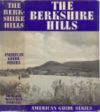Pages 20-29
This page-by-page annotation is organized by sections, as delineated by the seven squares (sprockets) which separate each section. The page numbers for this page-by-page annotation are for the original Viking edition (760 pages). Editions by other publishers vary in pagination — the newer Penguin editions are 776 pages; the Bantam edition is 886 pages.
Contributors: Please use a 760-page edition (either the original Viking edition with the orange cover or the Penguin USA edition with the blue cover and rocket diagram — there are plenty on Ebay for around $10) or search the Google edition for the correct page number. Readers: To calculate the Bantam edition use this formula: Bantam page # x 1.165. Before p.50 it's about a page earlier; as you get later in the book, add a page.
Finally, profound thanks to Prof. Don Larsson for providing the foundation for this page-by-page annotation.
Contents
Page 20
20.36 TDY
Not "tour of duty," as in Weisenburger, but "temporary duty."
20.37 East End This is the East End of London, particularly heavily bombed by the Germans in the war as London's docks were situated there. Famously, Queen Elizabeth's mother made a royal visit there during the war where she was enthusiastically received.
Page 21
21.07 A lot of stuff prior to 1941 is getting blurry now.
Even this early in the novel, Slothrop has problems with his "temporal bandwidth."
21.36 86’d
While sources do agree with Weisenburger that the term "86" might originate in rhyming slang (for "nix"), they also agree that it was first used in the restaurant business to indicate menu items that were no longer available. The wider usage here may not have originated until the 1950s.
Page 22
22.04 Frick Frack Club
The term "frick and frack" is often used to designate two people or almost any two items closely associated with each other. The term originates from the stage names of a pair of Swiss skaters who starred in ice shows in the 1930s. Pynchon probably chose the name more for its senseless alliteration (like "Kit-Kat Club") than any specific meaning.
Page 25
25.06-07 Slothrop’s Progress . . . a parable
"Slothrop’s Progress" echoes John Bunyan’s Puritan allegory The Pilgrim’s Progress. The word "parable," interestingly, comes from the same root as "parabola."
Page 26
26.30 back home in Mingeborough, Massachusetts
The Berkshire town was first created by Pynchon in the short story "The Secret Integration," set in the mid-1960s. This story also introduced the Slothrop family, in the person of Hogan Slothrop, who is apparently the son of Tyrone’s brother. Minges (or "midges") are small, biting insects. However, "minge" is also a British slang term for a woman's genitals.
26.33 British Double Summer Time
Correspondent Igor Zabel explains this term:
" . . . in Britain they had, during the war, the clocks an hour ahead in the winter time and two hours in the summer time."
26.37-38 Death is a debt to nature due . . . so must you.
Weisenburger claims that this epitaph, with its debt to "nature" rather than God, would be heretical to Puritans. That might be so, but the inscription was fairly common on tombstones in the northeast from the mid-1700s until the early 1800s, a range that includes Constant’s 1760 death.
Page 27
27.04 Variable Slothrop
The son of "Constant": The two names play a mathematical pun and suggest the family’s decline as well.
27.31-33 They began as fur traders, cordwainers, salters and smokers of bacon, went on into glassmaking, became selectmen, builders of tanneries, quarriers of marble.
Page 28
28.02-03 paper—toilet paper, banknote stock, newsprint
The Berkshire Hills describes several paper mills in the region and notes the importance of the industry. One producer, Crane and Company, first used the term "bond" for high-quality paper and provided special paper for U.S. currency from 1879 on [2]. Another company, in the town of Lee, gave the "first practical demonstration in America of the process of manufacturing paper from wood pulp instead of rags" [3].
V28.33-34 Harrimans and Whitneys gone
The Harrimans are mentioned in passing several times in The Berkshire Hills as being among the wealthy families who spent their summers in the region. William C. Whitney, President Cleveland’s Secretary of the Navy, is specifically mentioned as the founder of a vacation colony in Lenox in 1886 [4].
Page 29
29.04 Hogan
Tyrone Slothrop’s brother, presumably the father of the Hogan Slothrop of "The Secret Integration," set in the Berkshires a generation later.
References
- ↑ The Berkshire Hills', Funk & Wagnalls Company, New York, 1939
- ↑ Ibid, p. 238
- ↑ Ibid, p. 143
- ↑ Ibid, p. 224
| 1 Beyond the Zero |
3-7, 7-16, 17-19, 20-29, 29-37, 37-42, 42-47, 47-53, 53-60, 60-71, 71-72, 72-83, 83-92, 92-113, 114-120, 120-136, 136-144, 145-154, 154-167, 167-174, 174-177 |
|---|---|
| 2 Un Perm' au Casino Herman Goering |
181-189, 189-205, 205-226, 226-236, 236-244, 244-249, 249-269, 269-278 |
| 3 In the Zone |
279-295, 295-314, 314-329, 329-336, 336-359, 359-371, 371-383, 383-390, 390-392, 392-397, 397-433, 433-447, 448-456, 457-468, 468-472, 473-482, 482-488, 488-491, 492-505, 505-518, 518-525, 525-532, 532-536, 537-548, 549-557, 557-563, 563-566, 567-577, 577-580, 580-591, 591-610, 610-616 |
| 4 The Counterforce |
617-626, 626-640, 640-655, 656-663, 663-673, 674-700, 700-706, 706-717, 717-724, 724-733, 733-735, 735-760 |
